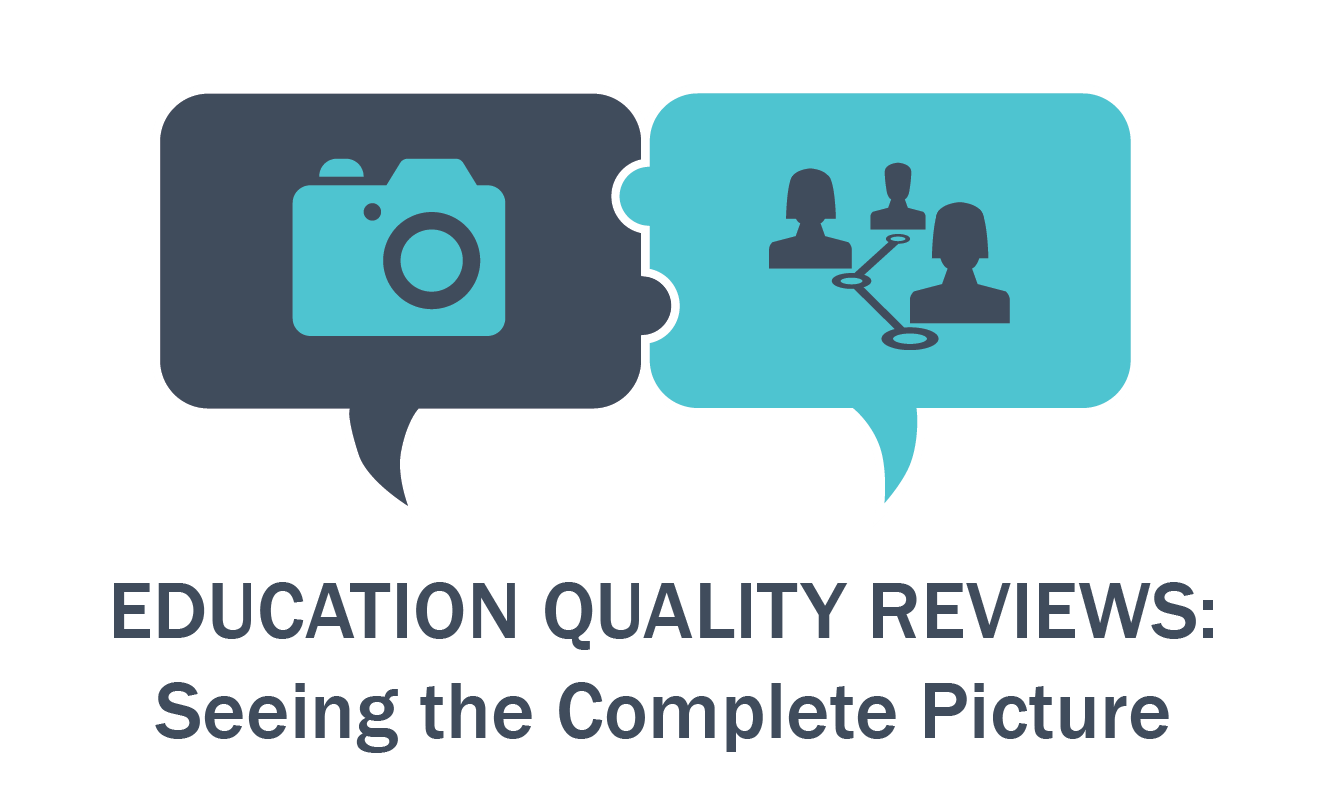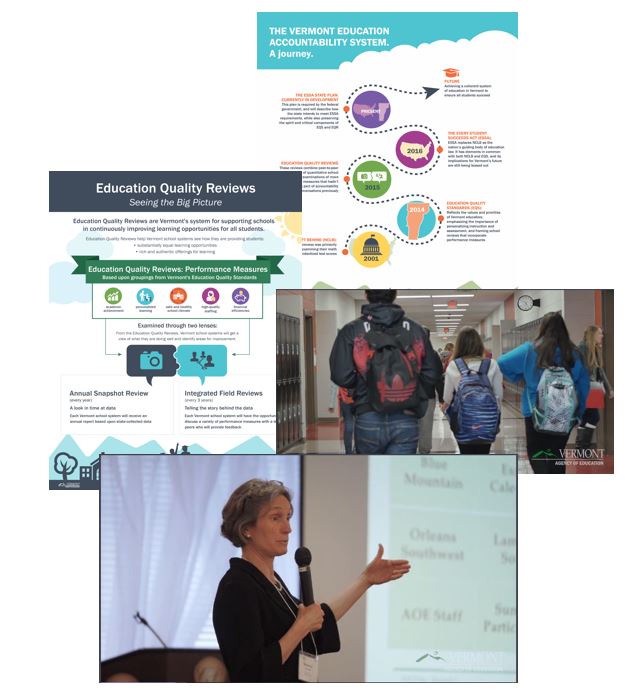How the Vermont Agency of Education has made stakeholder engagement part of continuous improvement
As the Vermont Agency of Education (VAOE) has been developing the state’s accountability system, from No Child Left Behind (NCLB) to designing its Education Quality Standards (EQS) and the transition to the Every Student Succeeds Act (ESSA), one theme has remained true for educators in Vermont:
There is much more that goes into measuring the quality of education than reading and math scores.
That’s why as the state began to design the Education Quality Review (EQR) system in 2015, they wanted to achieve a system that helped stakeholders:
- Understand the quality of local-based efforts and local-decisions regarding EQS implementation;
- Recognize the full range of outcomes we expect schools to deliver;
- Identify promising practices to lift up to share with other school systems;
- Create networking opportunities among geographically proximate school systems; and
- Build a collective responsibility for all students in Vermont.
“What it came down to for us was the validity of the state’s accountability system,” said Amy Fowler, Deputy Secretary, Vermont Agency of Education. “With NCLB and ESSA, there are so many metrics that we can measure and calculate, but at the end of the day educators look at it and say, ‘This isn’t all that matters. If you came to my school you’d see great things going on.’ We need a system that’s helpful in supporting continuous improvement.”

Keeping this in mind, the agency developed the EQR system with two pieces to provide a more complete picture of education quality:
- An Annual Snapshot Review report based on state-collected data; and
- An Integrated Field Review (IFR), which involves field visits to Vermont school systems with the opportunity to discuss performance measures with a team of peers who provide feedback.
“The goal of having a two-part system is to give educators a more diverse set of data to help improve outcomes,” said Josh Souliere, Assistant Director of Education Quality Reviews, Vermont Agency of Education.
Stakeholder engagement has been a crucial part of the process to design and implement the EQR system, in particular the IFRs. The stakeholder input began at an initial Summit, where educators, parents, community members, and others came together to imagine what a field review process might look like.
“The idea of looking at the local approach was a powerful one because the expectation was not that the Agency was going to hand down solutions, but that locally, we can work together to make things better. This process really led us in that direction by saying, here are the lenses we want you to apply, and how are you working on them?”
—Michael Martin, Curriculum Director, Montpelier Public Schools
Once the initial field review protocol was designed, piloting has been another way in which the VAOE has been able to continually gather feedback about the field reviews and make tweaks to the process depending on what is working, and what isn’t.
“As a state we wanted to have input from the field about what works for them,” said Souliere. “We weren’t initially planning on having several rounds of piloting for the field reviews, but we also didn’t want to turn away anyone. As a result of multiple rounds of pilots, we have been able to have diversity in those participating in the pilot, from a large, 13-building system to a single-building school district.”

The VAOE has also invested in creating a number of materials about the EQR and IFR process to communicate the rationale, goals, and process to educators and community stakeholders. These communications have included:
- Messaging frameworks
- Infographics
- Video series interviewing pilot participants about their experience and the impact
The video series in particular has allowed the VAOE to demonstrate stakeholder involvement and input in the process as new participants are becoming involved in pilots. Fowler said the videos have been a way to show audiences that the process has been authentic and ground-up, and not a VAOE-driven initiative. As a result, the agency is seeing more buy-in and reduced anxiety about the EQR and field reviews as a whole.
While the VAOE has been focusing its communication and engagement efforts around these initiatives with those educators and stakeholders involved in the pilots, statewide surveys have demonstrated the impact of strategic, intentional, and ongoing stakeholder engagement.
“Having outside eyes observe our system was an opportunity to affirm hypothesis/perceptions about what our strengths/needs were…and helped us organize those findings in a way we could present, share, and discuss with faculty in a systemic way.” —Tracy Wrend, Superintendent, Lamoille South Supervisory Union
Combined surveys given to both educators who have been involved in the process, as well as those who are new to the process, show that those involved in Summits, pilot programs, or other aspects of providing feedback generally respond more favorably to the impact of the EQR and field reviews as those who have not been involved with the process. The VAOE is using this feedback to continue to inform their communication and stakeholder engagement strategy.
“Our process for stakeholder engagement in this work has set a new expectation from the field about their input, and as a result we are receiving deeper feedback from educators throughout the state,” said Fowler. “I used to get concerns about things, but now I’m hearing from the field ‘How can we co-create a solution together?’ It’s definitely changing the interactions between the field and the agency.”
Learn more at
education.vermont.gov.